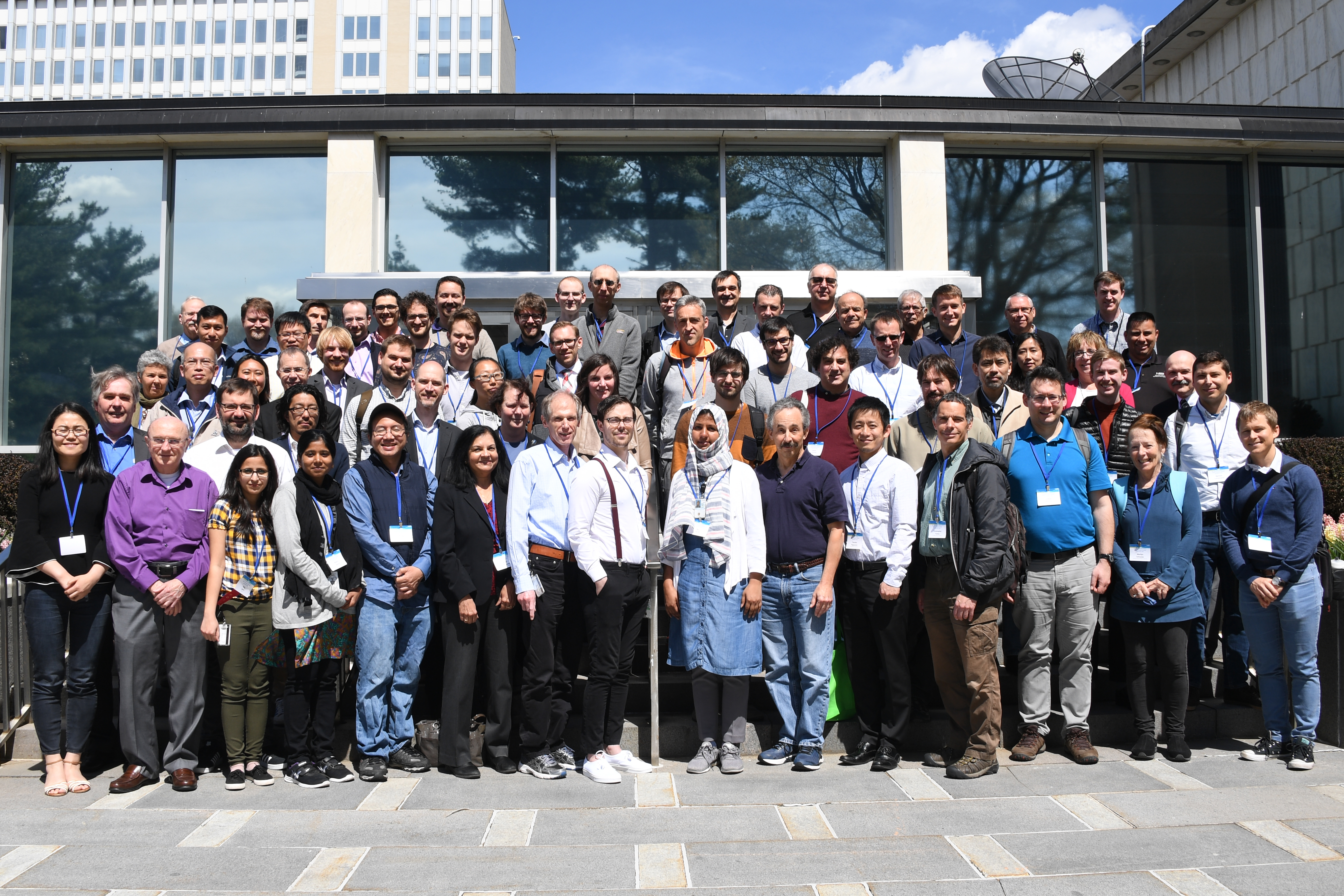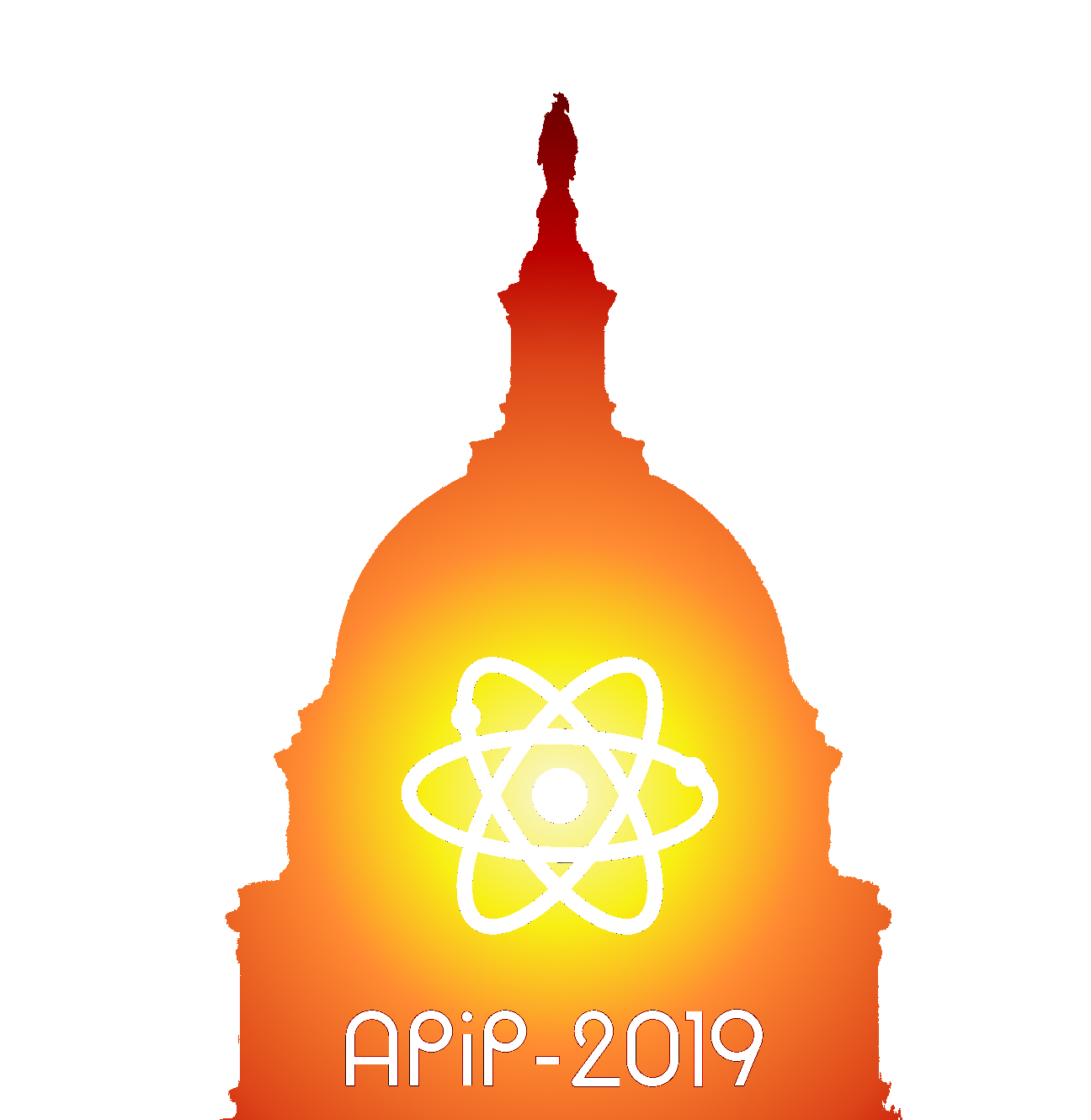
Program
|
Monday April 8 |
||
|
17:00-20:00 |
Registration and reception (Courtyard Mariott, Washingtonian Rio) |
|
|
Tuesday April 9 |
||
|
8:50-9:00 |
Opening |
|
|
High energy density physics |
||
|
9:00-9:35 |
M.B. Schneider (LLNL, USA) |
X-ray spectroscopy and atomic physics of relevance to inertial confinement fusion |
|
9:35-10:10 |
Z. Harman (MPIK, Heidelberg, Germany) |
|
|
10:10-10:30 |
K. Hill (PPPL, USA) |
|
|
10:30-11:00 |
Coffee break |
|
|
Atomic data for plasmas |
||
|
11:00-11:35 |
N. Nakamura (Univ. of Electro-Communications, Tokyo, Japan) |
Measurement of high-multipole forbidden transitions in highly-charged ions produced with EBITs |
|
11:35-12:10 |
G. Nave (NIST, USA) |
|
|
12:10-12:30 |
J. Scheers (ARCNL, The Netherlands) |
EUV spectroscopy on highly-charged tin ions in an electron beam ion trap |
|
12:30-13:30 |
Lunch |
|
|
Astrophysical plasmas |
||
|
13:30-14:05 |
N.S. Brickhouse (CfA-Harvard Univ., USA) |
Recent advances in x-ray spectroscopy of astrophysical plasmas |
|
14:05-14:40 |
G. Loisel (SNL, USA) |
|
|
14:40-15:00 |
A. Gall (Clemson Univ., USA) |
|
|
15:00-15:30 |
Coffee break |
|
|
Magnetic fusion plasmas |
||
|
15:30-16:05 |
B. Lomanowski (ORNL, USA) |
|
|
16:05:16:40 |
A.E. Järvinen (LLNL, USA) |
Use of VUV spectroscopy in validation of DIII-D boundary science during radiative divertor operation |
|
16:40-17:00 |
E. Flom (Univ. of Wisconsin--Madison, USA) |
The He/Ne beam diagnostic for line ratio spectroscopy in the Island Divertor of Wendelstein 7-X |
|
Wednesday April 10 |
||
|
Warm dense matter |
||
|
9:00-9:35 |
T. Nagayama (SNL, USA) |
|
|
9:35-10:10 |
G.O. Williams (Univ. de Lisboa, Portugal) |
Impact of free-electron quantum effects on collisional rates in plasmas |
|
10:10-10:30 |
I.E. Golovkin (Prism Computational Sciences, USA) |
|
|
10:30-11:00 |
Coffee break |
|
|
Low-temperature plasmas |
||
|
11:00-11:35 |
O. Marchuk (Forschungszentrum Jülich, Germany) |
Emission of fast hydrogen atoms in a low density gas discharge: the most "natural" mirror laboratory |
|
11:35-12:10 |
E.H. Martin (ORNL, USA) |
Electric and magnetic field measurements using Doppler-free saturation spectroscopy |
|
12:10-12:30 |
V. Kokoouline (Univ. of Central Florida, USA) |
|
|
12:30-13:30 |
Lunch |
|
|
High energy density plasmas |
||
|
13:30-14:05 |
C.G. Parigger (Univ. of Tennessee, USA) |
Atomic and molecular spectroscopy and self-absorption measurements |
|
14:05-14:40 |
A. Dasgupta (NRL, USA) |
Spectroscopic diagnostics using line-radiation in laser driven non-equilibrium plasmas |
|
14:40-15:00 |
J. Sheil (Univ. College Dublin, Ireland) |
Spectroscopy of laser-produced lanthanum plasmas in the 0.8 – 4.2 nm region |
|
15:00-15:30 |
Coffee break and Posters (NIST Poster Hallway) |
|
|
Thursday April 11 |
||
|
Magnetic fusion plasmas |
||
|
9:00-9:35 |
T. Pütterich (MPIP, Germany) |
|
|
9:35-10:10 |
C. Suzuki (NIFS, Japan) |
Soft x-ray spectroscopy of rare-earth elements in LHD plasmas |
|
10:10-10:30 |
C. Hill (IAEA, Austria) |
|
|
10:30-11:00 |
Coffee break |
|
|
X-ray sources |
||
|
11:00-11:35 |
H.J. Lee (SLAC, USA) |
Observation of Fe K-α emission spectra under keV temperature solid-density conditions |
|
11:35-12:10 |
F. Dorchies (Univ. de Bordeaux, France) |
|
|
12:10-12:30 |
M.J. May (LLNL, USA) |
Development of high fluence x-ray sources using laser heated novel nano-wire metal foams |
|
12:30-13:30 |
Lunch |
|
|
Low-temperature plasmas |
||
|
13:30-14:05 |
T.C. Killian (Rice Univ., USA) |
Laser cooled neutral plasmas: a laboratory for the study of strongly coupled systems |
|
14:05-14:40 |
I.F. Schneider (Univ. du Havre, France) |
|
|
14:40-15:00 |
M.C. Zammit (LANL, USA) |
|
|
15:00-15:30 |
Coffee break |
|
|
Astrophysical plasmas |
||
|
15:30-16:05 |
D.R. Schultz (North Arizona Univ., USA) |
|
|
16:05:16:40 |
C.J. Fontes (LANL, USA) |
A link between atomic physics and gravitational wave spectroscopy |
|
16:40-17:00 |
Dipti (NIST, USA) |
Polarization of K-shell x-ray transitions in highly charged ions of Ar |
|
|
|
|
|
19:30-… |
Dinner (Guapos, Washingtonian Rio) |
|
|
Friday April 12 |
||
|
Dense plasmas and line broadening |
||
|
9:00-9:35 |
R. Piron (CEA, France) |
Atomic processes in dense plasmas through the average-atom approach |
|
9:35-10:10 |
T.A. Gomez (SNL, USA) |
|
|
10:10-10:45 |
S. Ferri (Aix-Marseille Univ., France) |
|
|
10:45-11:05 |
Coffee break |
|
|
High energy density plasmas |
||
|
11:05-11:40 |
F.P. Condamine (ELI Beamlines, Czech Republic) |
|
|
11:40-12:15 |
D.C. Mayes (Univ. of Nevada Reno, USA) |
|
|
12:15-12:35 |
R. Schupp (ARCNL, The Netherlands)
|
Scaling of emission efficiency and optical depth in dense 1 μm-laser-driven Sn plasmas |
|
12:35-12:40 |
Meeting adjourns |
|
|
Posters |
||
|
The poster session will be held in the Poster Hallway. The board size is 4'(width) × 7' (height). |
||
|
#1 |
A. Kramida (NIST, USA) |
|
|
#2 |
J. Deprince (Univ. Mons, Belgium) |
|
|
#3 |
J. Rosato (Aix-Marseille Univ., France) |
Quantifying the Statistical Noise in Computer Simulations of Stark Broadening |
|
#4 |
J. Ward (NIST, USA) |
|
|
#5 |
B.F. Krauss (Princeton Univ., USA) |
Plasma Conditions in Short-Pulse-Heated Buried Tracer Layers from Fine-Structure X-ray Emission |
|
#6 |
Hala (NIST, USA) |
|
|
#7 |
O. Peyrusse (Aix-Marseille Univ., France) |
Prospects concerning 1D photonic crystals in the X-ray range |
|
#8 |
J.E. Rice (PSFC MIT, USA) |
|
|
#9 |
Q. Min (Northwest Normal Univ., China) |
Investigation of radiation and dynamics properties in laser-produced plasma |
|
#10 |
P.F. Liu (NUDT, China) |
|
|
#11 |
H.A. Scott (LLNL, USA) |
Free-Electron Degeneracy Effects for Collisional-Radiative Codes |
|
#12 |
A.S. Naing (NIST, USA) |
|
|
#13 |
J.N. Tan (NIST, USA) |
|
|
#14 |
L. Gao (PPPL, USA) |
Time-Resolved Measurements of the Hot Spot Density and Temperature on the National Ignition Facility |
|
#15 |
S.C. Sanders (Clemson Univ., USA) |
|
|
#16 |
C. Mendoza (Western Michigan Univ., USA) |
|
|
#17 |
C. H. Yuen (Univ. of Central Florida, USA) |
Simplified model to treat the dissociative electron attachment of complex molecules |
|
#18 |
Q. Lu (Fudan Univ., China) |
|
|
#19 |
S. Gupta (Indian Institute of Technology, India) |
|

